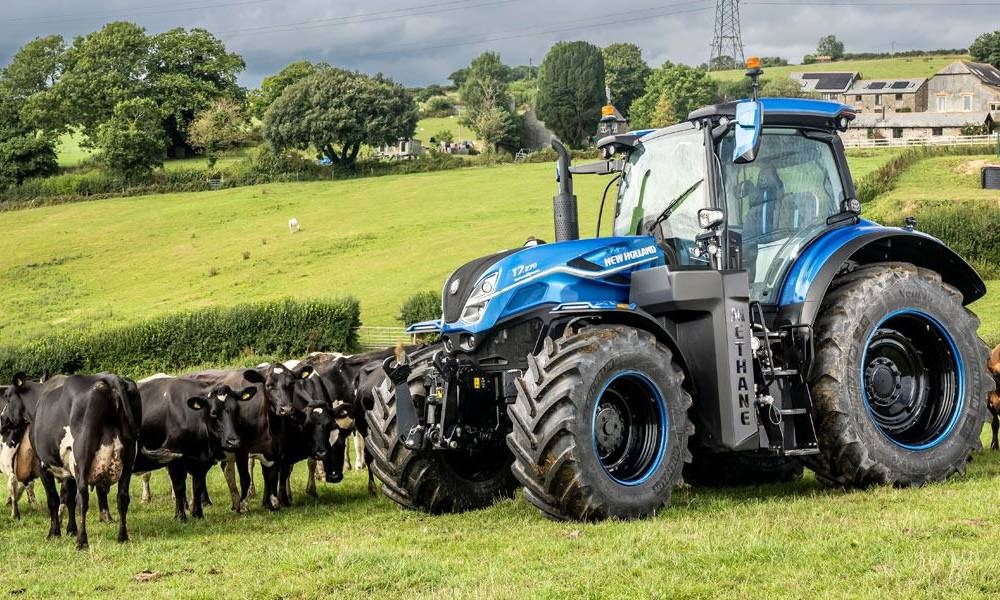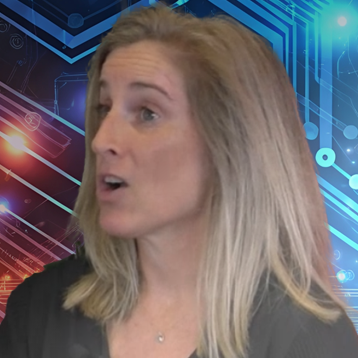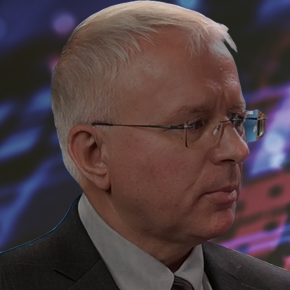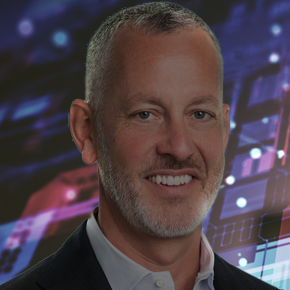December 14, 2022
Best of Sustainability 2022

Transcript
If there was one word that underlined all my conversations with manufacturers in 2022 it was: sustainability. The past year saw the first wave of reporting mandates hit Europe, while stateside companies scrambled to prove they were improving on sustainability– even if they weren’t quite sure what metrics they were supposed to be tracking.
Today I want to revisit some of the most provocative conversations with sustainability experts in 2022, and use their insights to look ahead to 2023.
Let’s start with Stefan Schmidt, who explained to me what the new EU taxonomy for sustainable activities means for manufacturers operating in Europe and around the world.
The Impact of 2022 Sustainability Legislation
Stefan Schmid: Let’s answer this question quite shortly. The environment becomes a price. That is the point. The economy, no matter in which branch companies are working, they’re used to the fact that materials, labor, that has a price and all of a sudden now the environment gets a price tag and that’s a substantial change because now the trade-off between cost of a product and the environmental impact of a product becomes an imperative for the companies.
Leah Archibald: And that’s never been true before.
Stefan Schmid: This is now imminent. I suspect the environment always had a price, but now, we know it has a price tag. Now it needs to be respected. And there is a clear methodology. Now it’s being established how this price becomes transparent.
Leah Archibald: So let’s dive into the details here. The new taxonomy divides the concept of how to make a sustainable product into six activities. There’s climate change mitigation, there’s climate change adaption, there’s sustainable use of water and protection of water and Marine resources. There’s a transition to a circular economy, then there’s pollution prevention and control. And lastly, there’s protection and restoration of biodiversity and ecosystem. Now does a company need to focus on all six activities successfully qualify as sustainable or can they employ a divide and conquer strategy?
Stefan Schmid: No, To put it negative, no greenwashing and selecting one and violating the others would be greenwashing. The rule is if you want to be compliant with the taxonomy regulation you need to overachieve at least in one area but you may not violate any of the others.
Leah Archibald: From the point of view of manufacturers looking at this list of sustainable activities, is there one that’s likely to affect manufacturers more either because it’s more costly to implement or more difficult to track?
Stefan Schmid: Yeah. If we look at our industries, our customers that are deeply involved in mechanical engineering, water, is one aspect. Energy consumption is the next. I think one is climate protection is the one where things like CO2 consumption is touched. The point really in this taxonomy, is that, is it water? Is it energy? Is it CO2 consumption?
Stefan Schmid: The companies being affected by sustainability reporting under the EU taxonomy have to either prove that they are sustainability compliant or over-achieve in one area of sustainability.
And the question now is how? How can they prove? How can a car producer or a plane producer, how can he prove that his way of working is most economically and environmentally effective?
How to Track Sustainability in 2023
Leah Archibald: How can companies reliably track their sustainability? Before we tackle the how question, I want to think about the question of When? When should you be looking at the sustainability of a product? Is it in a lifecycle analysis? Or when you’re planning your sourcing strategy? Or even earlier – like at the beginning of the design phase? In this next interview, green manufacturing consultant Bob Tanguay revealed why he thinks designer engineers should at the forefront of sustainability evaluation.
Bob Tanguay: In my opinion, you need to be solving these problems when they’re still in their digital formation stage. If you’re coming to market with a new product, it’s critical to make these decisions as early as possible in the design stage. Because what happens if you miss out on that moment, if you don’t calculate your sustainability impact for that design, you are going to get locked into a bad decision for the next 10 to 20 years. Because once it leaves the factory floor, in most market verticals, you’re locked into that and that’s not coming back. Especially if you’re in a regulated market. Try making a material change in a product you developed two years ago that’s in use, and it’s going to be in use with the customer for the next 10 to 20 years. And by the way, you’re servicing that product.
So, there could be a lot of gating factors that prevent you from going back to something later and doing a better job with it. It may be too late. For that reason, aPriori’s platform ties in really well with what folks are doing in early design. Making trade-off comparisons, evaluating supplier capabilities, deciding did I get the best possible material – there are so many things that can be addressed through those different stage gates as a product comes to market that lend themselves to adding sustainability into the equation. If you can calculate your carbon footprint based on the future products that you’re going to bring to market and all the bad surprises you can eliminate, if I was a Chief Sustainability Officer, I would want to report on that, measure that, and track that.
Leah Archibald: If Stefan told us why and bob told us when, it’s time to answer the question of how. How can manufacturers track sustainability reliably, quantifiably, and side by side with other decision metrics such as cost and manufacturability? To answer that question I turn to Gibson Peters, aPriori’s product manager for sustainability. He gave us an insight into the factors that designers usually miss when it comes to calculating sustainability, and how you can move forward with greater accuracy.
Improving Design and Production for Sustainability
Gibson Peters: One of the problems people have today is when we talk about sustainability and design, they’re often not spoken about at the same time. Today, you usually design a product, and then when the product is fully designed you hand it over to the life cycle assessment team. Sustainability is not part of their design process.
Leah Archibald: You’re always kind of playing catch up? You’re not really addressing sustainability in the design phase?
Gibson Peters: You’re always playing catch up. The problem is that 80% of the environmental impact of a product is created in the design phase. So, what we’re trying to do with design and production for sustainability is design something that functions, meets your cost expectations, and meets your sustainability goals at the same time.
Leah Archibald: That sounds like a pipe dream. How do you actually do that?
Gibson Peters: It’s a great question. So what we’re doing is allowing people to iterate in real-time how sustainability impacts their products. With aPriori, when you cost a product, you will automatically get your sustainability footprint for that product as well. And so when you look at minimizing the cost of that product, you can see how that affects carbon. And then when you look at changing the design for reducing your carbon, you can see how it impacts cost. So really we’re trying to find the sweet spot of optimizing for both cost and carbon at the same time in the design phase, and giving that feedback early in the process to the designers, to the cost engineers, and to the sourcing professionals.
Leah Archibald: I want you to talk a little bit more about the gap that’s been in the marketplace for finding the hidden CO2 in manufactured products. You mentioned finished mass as one of the only metrics that companies have been tracking. What does that leave out?
Gibson Peters: Finished mass leaves out waste. Let’s say I purchase 100 tons of steel, but I don’t know how does that steel really get used in my product. If I look at finished mass alone, I don’t understand the waste associated with a product. So, one of the case studies we’ve done is looking at the waste generated by making the same product via different production models. I’m looking at machining the product versus die casting, which is melting the metal and then putting it into a mold. At first glance a lot of people would think that die casting would be a more carbon-intensive process because of the energy taken to melt the material down.
Leah Archibald: I can see it in my mind, the energy coming off of the melted metal. It’s very hot. It’s carbon going into the atmosphere.
Peters: But depending on how that part is designed, the great thing about die casting is you will use 96%, 97%, or 98% of the metal. Because almost everything that you melt down goes into that product. So it’s very efficient when it comes to waste utilization. When you look at machining, that same part could have a lot of waste when you machine away all that material to get to the finished product. So, you could be wasting two-thirds, and all that material is not captured when you’re looking at only finished mass.
Leah Archibald: So what you’re saying is that the waste material has a huge impact on the CO2, but it hasn’t really been brought into previous models that are being used for sustainability.
Gibson Peters: Right. That’s been a big gap in what we’ve seen with life cycle assessment tools. If I just know my finished mass, but I don’t know how much mass it took to get to that finished mass, that’s a missing part of life cycle assessment.
Leah Archibald: So you are looking into waste material to find the hidden CO2. What else are you looking at?
Gibson Peters: We find the other big driver is cycle time. aPriori has spent the last 20 years building up cost models that really understand cycle time. And the great thing with cycle time is it has a linear correlation to CO2. So, if you’re able to drive down cycle time, you’re able to drive down cost and carbon at the same time.
Leah Archibald: I think in the past the received wisdom in the sustainability conversation is that cost and sustainability are always opposed, meaning it’s always going to be a trade-off. We’re always going to have to pay more money for less of a carbon footprint. And I think the multi-directionality of aPriori’s tool is giving us new ways to look at the question, and actually there are ways to both reduce cost and improve carbon footprint.
Gibson Peters: Absolutely. What we’ve found in a number of case studies is often your initial assumption of where the carbon is coming from isn’t really what drives CO2. Material is one example. Just because you switch material to one that has less carbon per kilogram doesn’t necessarily save the amount of carbon you would assume. Because the new product could be denser, or it could be more rigid. To date we have had these instincts that have been really difficult to quantify, and some of them have been right but some of them have been wrong. Until you can quantify them, you don’t know which is which.
Leah Archibald: When we look at the strides made toward sustainability in 2022, one thing is clear. There’s no going back to the bygone era when high-level promises were enough to prove a green posture. Instead, 2023 will drive us ever closer to a future where all parts of a product, no matter where they’re produced, will need to prove their environmental impact with real hard data







